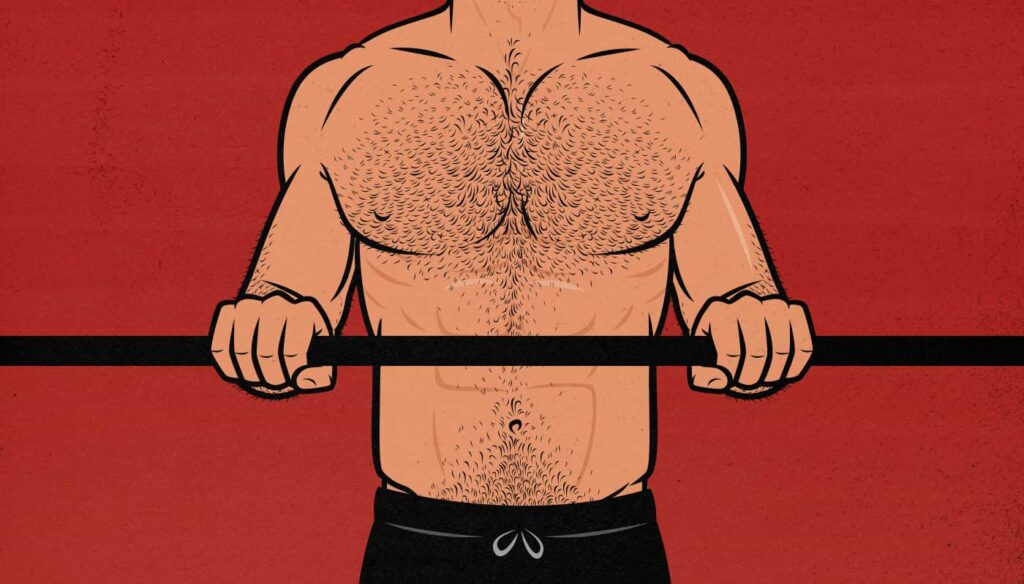
The Close-Grip Bench Press Guide
The close-grip bench press is an assistance lift for the bench press done with a narrower grip. This narrower grip shifts emphasis away from your chest and onto your upper chest, shoulders, and triceps. It’s most commonly used by powerlifters to help them build a bigger 1-rep max on the bench press, but it can be quite good for gaining muscle size, too.
So, when and why should you do the close-grip bench press?
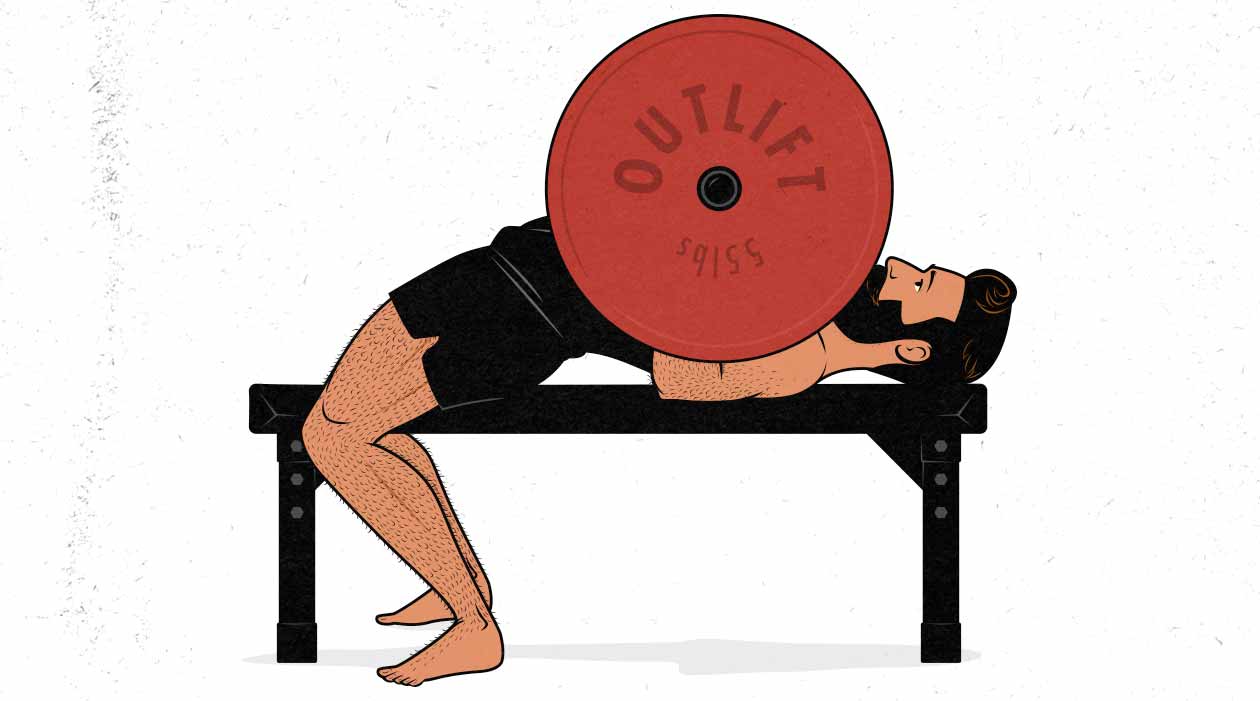
What is the Close-Grip Bench Press?
The close-grip bench press is a compound upper body pushing lift that’s often used as an assistance lift for the barbell bench press or overhead press. It’s almost identical to the barbell bench press, but for the fact that it uses a closer grip and tucked elbows, like so:
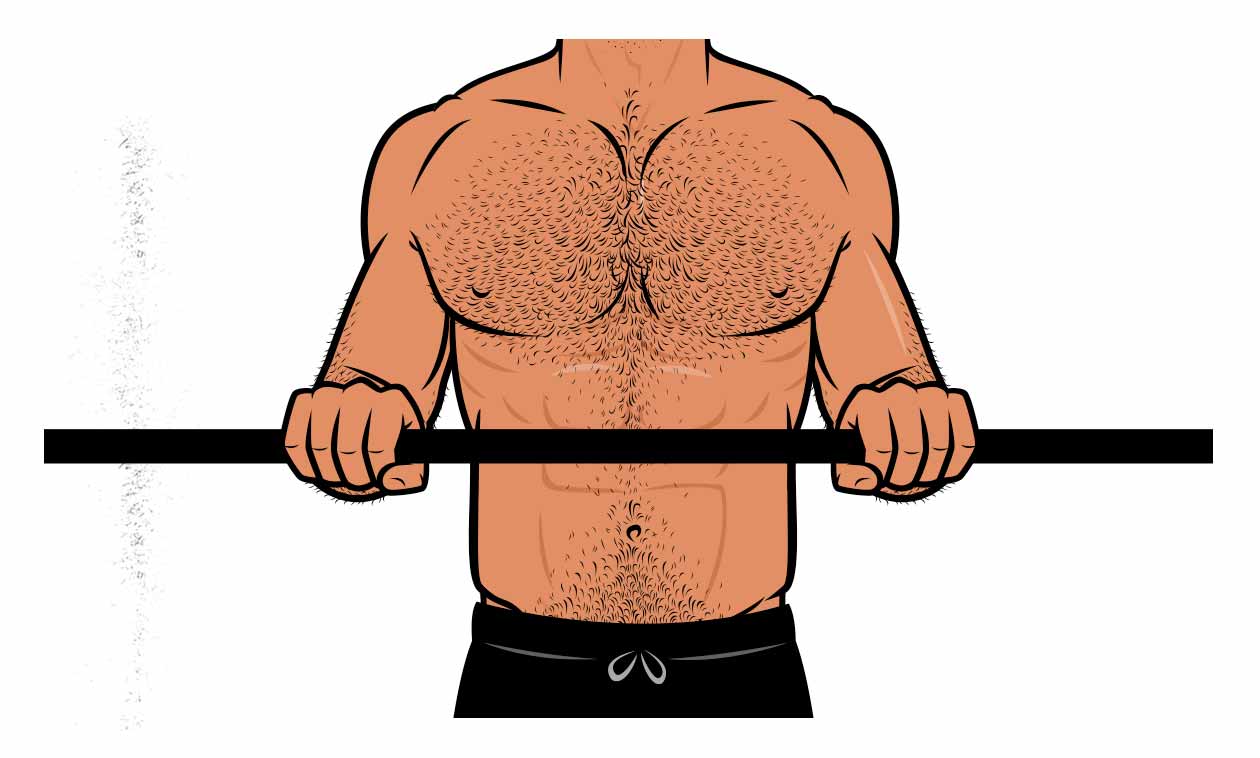
Different people use different grip widths, but it’s typically done as narrow as possible, with the hands just outside the torso, just wide enough to let you bring the barbell all the way down to your torso without your hands getting in the way. This means that the barbell tends to come down lower on our torso, changing the dynamics of the lift and causing different muscles to be emphasized.
How to Do the Close-Grip Bench Press
The close-grip bench press isn’t exactly an advanced version of the barbell bench press, but it’s certainly a more specialized variation. I’d recommend mastering the regular barbell bench press first. It’s a bigger compound lift that’s a bit more intuitive to learn, and it will do a better job of stimulating your entire chest as well as your shoulders, upper chest, and triceps.
There are a few different ways to do the close-grip bench press:
- Use the narrowest grip that still allows you to bring the barbell all the way down to your torso. This is often just wider than shoulder width. This is the classic close-grip bench press, and it makes for a good default.
- Move your hands in a couple of inches from your regular bench press grip width. This will add a bit of variation into your bench press routine while still keeping the movement fairly similar. Is it a true close-grip bench press? Maybe not, especially if you typically bench quite wide. But it’s a good way to experiment with a closer grip and it can be a nice break for your shoulder joints.
Some people will recommend gripping the barbell even narrower than shoulder width, to the point where we can’t bring the barbell all the way down to our torsos anymore. We’d call that something else. Maybe a triceps press or a JM press. That can be a good lift for emphasizing the triceps, but it’s not what we’re talking about here. We’re talking about a bench press variation that’s done with a close grip, not a type of triceps extension.
To do the close-grip bench press, set up for a regular bench press—feet planted firmly, a strong arch, shoulder blades down and back—but grip the barbell with a narrow grip. After doing some warm-up sets with a lighter weight, your body will intuitively find proper leverage. For instance, you’ll notice that the barbell needs to come down lower on your torso.
What Muscles Does the Close-Grip Bench Press Work?
Main Muscles Worked
The close-grip bench press works the fronts of our shoulders (anterior deltoids), our upper chests (the clavicular fibres), and the shorter heads of our triceps, like so:
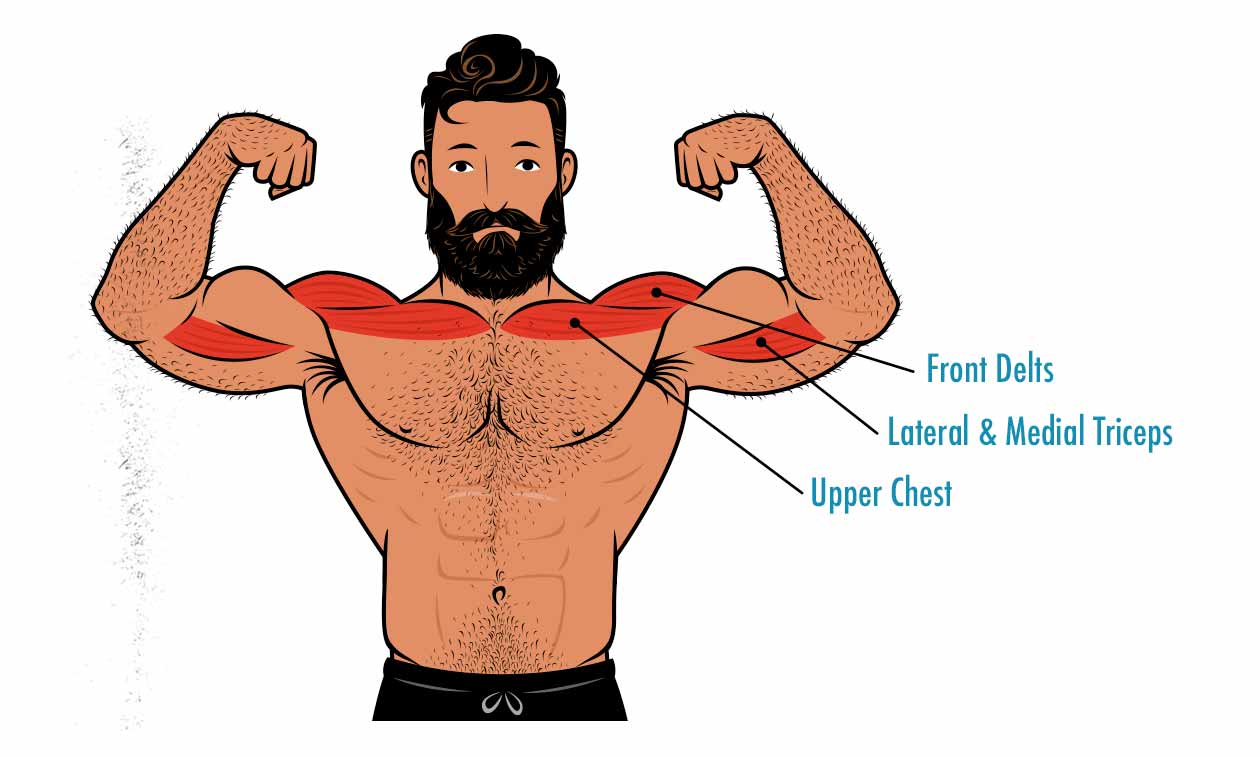
It’s often said that the close-grip bench press is a lift designed to bulk up your triceps, and that’s true, but there’s quite a bit more to it than that. It doesn’t target the heads of our triceps equally, it’s just as good for bulking up our shoulders, and it’s one of the best exercises for our upper chests. Perhaps most of all, it’s one of the very best assistance lifts for powerlifters who are trying to increase their bench press 1-rep max.
The Close-Grip vs Regular Bench Press
Using a narrower grip-width on the bench press shifts the emphasis away from our mid and lower chests and towards our upper chests, shoulders, and triceps. To get an idea of why that is, we can look at how our leverage changes as we bring our grip in closer:
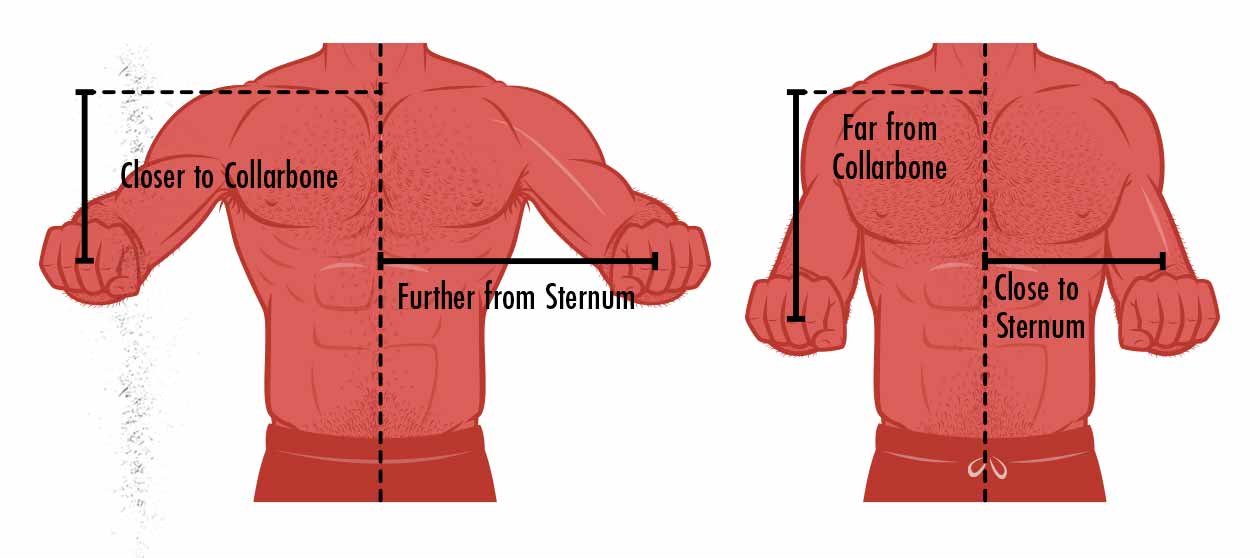
What we’re seeing here is that as you bring your grip in narrower, the moment arm between your hands and your sternum shrinks, reducing the demands on the bigger “squeezing” muscles of your chest. It becomes less of a fly, you could say. This makes it a poorer variation for gaining overall pec size and strength. But we also see that using a narrower grip means lowering the barbell lower down on your torso, which increases the moment arms for your shoulders and upper chest (which attaches to your collarbone).
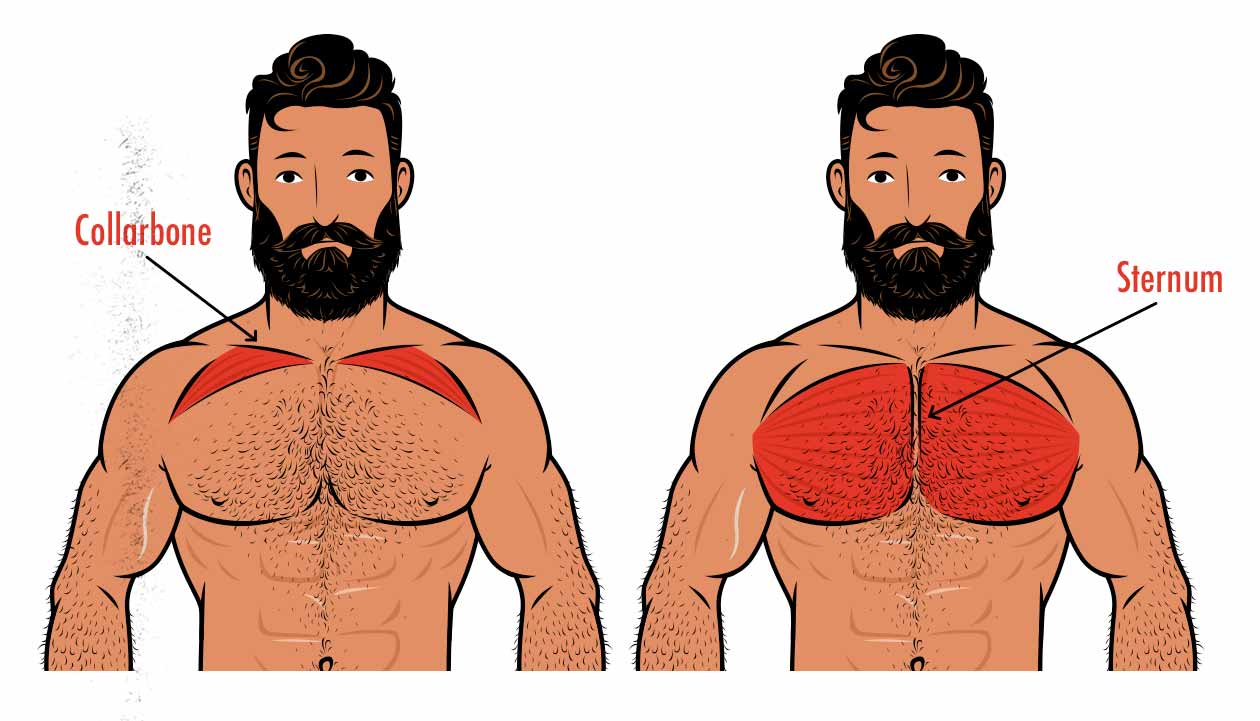
A regular bench press grip takes advantage of how big and strong your mid and lower chest is, and it balances demands between your chest, shoulders, and triceps, allowing you to lift more weight. As a result, the close-grip bench press is typically used as a lighter assistance lift that helps us gain size in our front delts, upper chest, and shorter heads of our triceps.
There are a few reasons you might want to include it in your routine:
- To improve your bench press 1-rep max.
- To bulk up your upper chest.
- To build bigger shoulders.
- To bulk up your triceps.
Let’s go over how to do that.
Using the Close-Grip Bench Press to Gain Strength
The close-grip bench press is a lighter variation of the bench press, often used as an assistance lift in powerlifting programs, given that it bulks up the muscles that tend to limit our 1-rep max bench press strength: our shoulders and triceps.
A recent EMG study found that as we delve into lower rep ranges, our shoulders and triceps become more and more dominant in the bench press. That means that when doing a set of 10 repetitions, that bench press is often a chest-dominant lift, best for building bigger pecs. But when we’re training to build a bigger 1-rep max, the bench press is just as much a shoulder and triceps lift. That means that if we want to increase our maximal bench press strength, it can really help to use assistance lifts that target the front delts and shorter heads of the triceps.
There are a few lifts that work the shoulders and triceps, ranging from push-ups to the overhead press, and those can certainly help, but when our goal is to improve our strength on a specific lift, the most efficient way to do that is often to choose a fairly similarly variation. That’s where the close-grip bench press comes in. It’s very similar to the bench press, except that it puts more emphasis on the front delts and triceps.
So when training to increase your 1-rep max on the bench press, you might want to experiment with lower-rep sets of the bench press, perhaps doing 3–5 sets of 3–6 reps. Then, either in the same or another workout, you can add in some close-grip bench pressing done in a moderate rep range, perhaps 3–4 sets of 8–15 reps.
Using the Close-Grip Bench Press to Build Muscle
Benching for the Upper Chest
One of the main differences between the regular bench press and the close-grip bench press is that instead of working your entire chests, it emphasizes the upper chest. This makes the close-grip bench press a great lift for people with lagging upper chests.
What’s interesting is that the close-grip bench press challenges your upper chest and shoulders at long muscle lengths—in a fully stretched position—which is ideal for stimulating muscle growth. That may, speculatively, make it better than the incline bench press for bulking up your shoulders and upper chest. After all, the incline bench press cuts out the very bottom of the range of motion on the bench press, failing to give us much of a stretch.
Benching for Bigger Front Delts
The close-grip bench press challenges both our front delts and upper chests in a fully stretched position, which is amazing for stimulating muscle growth. This makes the close-grip bench press one of the very best lifts for building bigger shoulders. In fact, it might be even better than the incline bench press and overhead press for bulking up our front delts.
Benching for Bigger Triceps
The close-grip bench press is an interesting lift for the triceps. As we explain in this article, the standard bench press only stimulates about half as much triceps growth as the triceps extension:
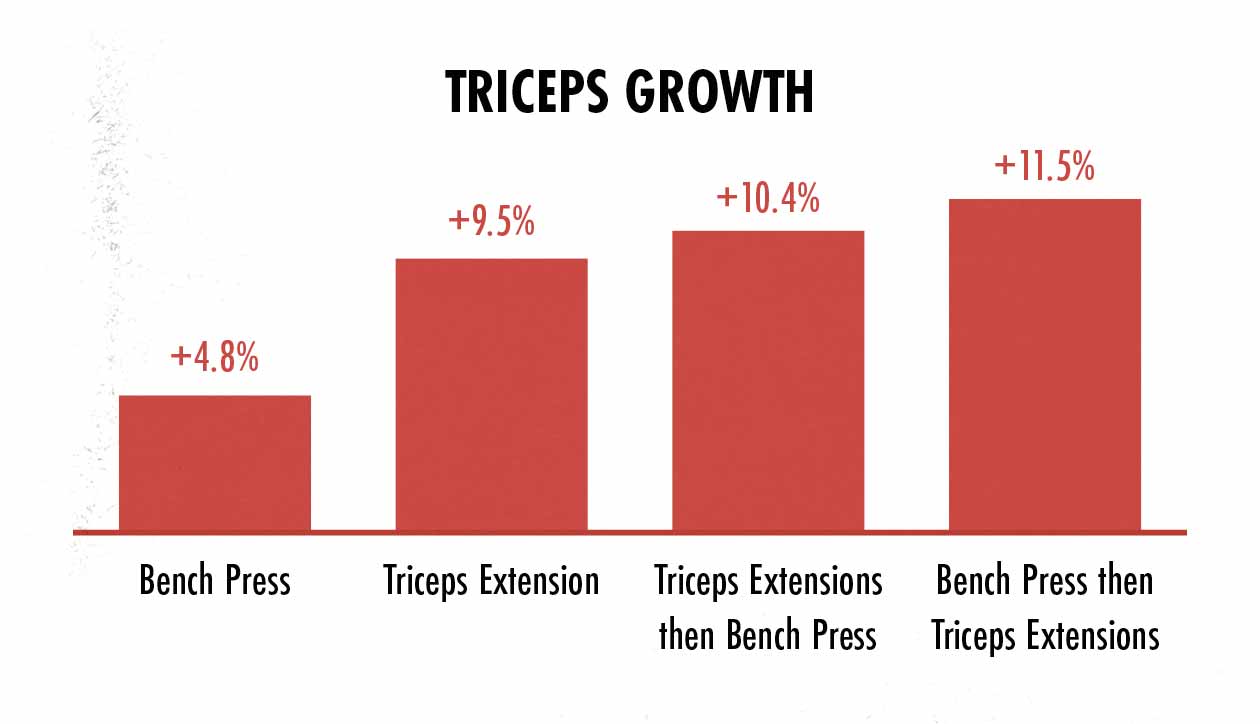
Why isn’t the bench press stimulating more triceps growth? One reason might be that our triceps aren’t brought close enough to failure, and that’s surely part of it. But another reason is that the long heads of our triceps cross both the elbow and shoulder joints. Our triceps help to lock out our elbows, yes, and that can help with the bench press. But they also help to pull our elbows back behind our bodies, which is the opposite of what we’re trying to do. That means that when we’re doing a compound pushing movement, we can’t fully engage the longer heads of our triceps. We use the shorter heads instead.
Now, what does this have to do with the close-grip bench press? First, it’s more demanding on our triceps, which should make it a great lift for bulking up the short heads of our triceps. But it still involves pushing the weight forward, meaning we can’t fully engage the long heads of our triceps. It’s not a complete triceps exercise.
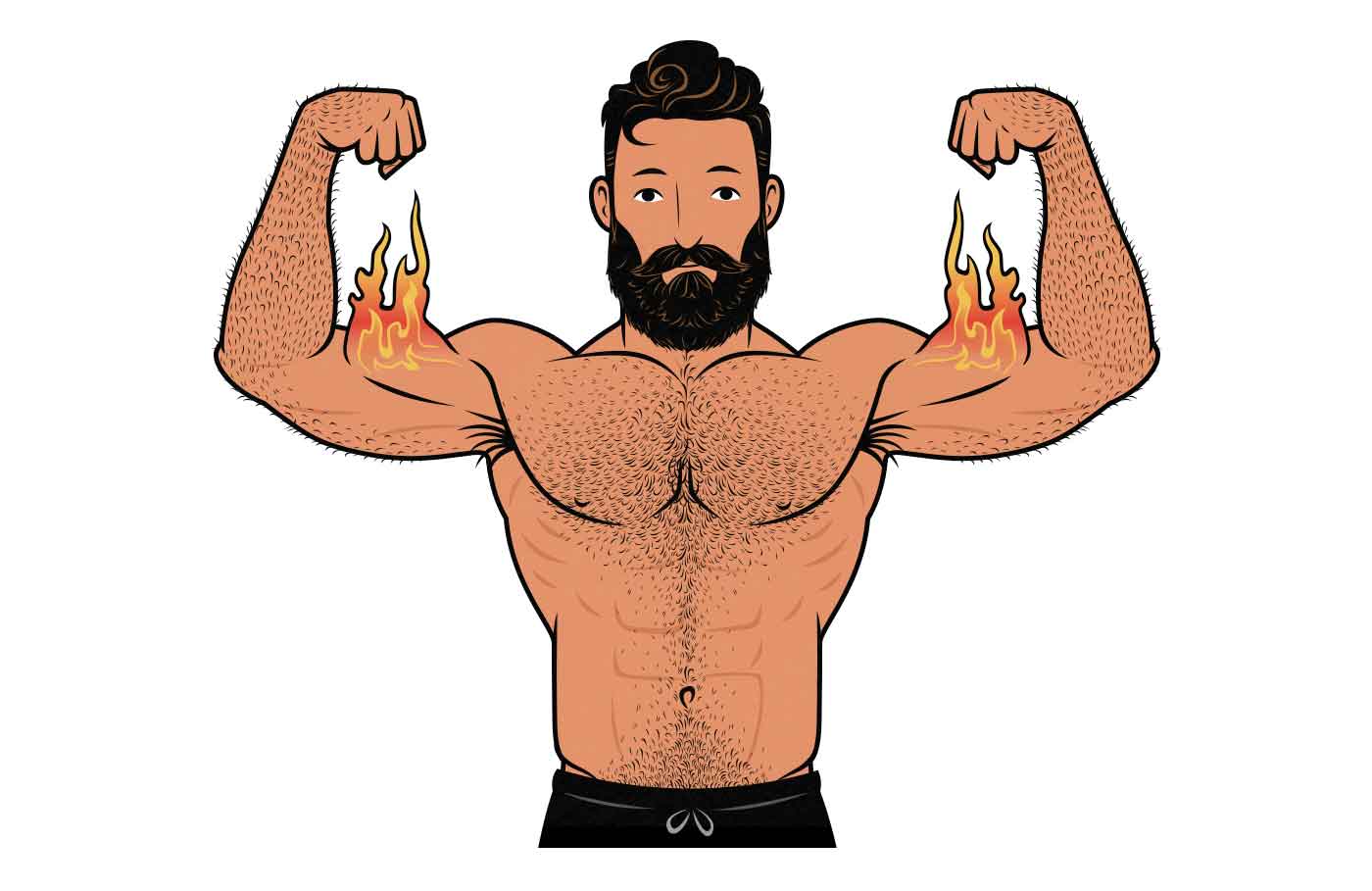
So, if your goal is to increase your triceps size and strength to build a stronger 1-rep max on the bench press, the close-grip bench press is perhaps the very best exercise for bulking up your triceps, since it works the heads that are most involved in the bench press. But if you’re trying to build bigger triceps, use skull crushers instead—it also works the long heads of the triceps, which are not only quite a bit bigger, but also the area of your triceps that’s mostly likely to be lagging behind.
Summary
The close-grip bench press is an assistance lift for the bench press that puts more emphasis on the shoulders, upper chest, and triceps. These are the muscles that often limit our strength when we’re benching in lower rep ranges, and so it’s a great lift for helping you build a bigger bench press 1-rep max.
The close-grip bench press is mainly used for gaining strength, but it can also be quite good for building muscle mass. It uses a deeper range of motion than the incline bench press, which should, in theory, make it better for building the front delts and upper chest. It’s not ideal for building bigger triceps, though, since it doesn’t challenge the long heads. If your goal is to build bigger triceps, the skull crusher is a better accessory lift to pair with the standard bench press (although it might not transfer quite as well to 1-rep max strength).
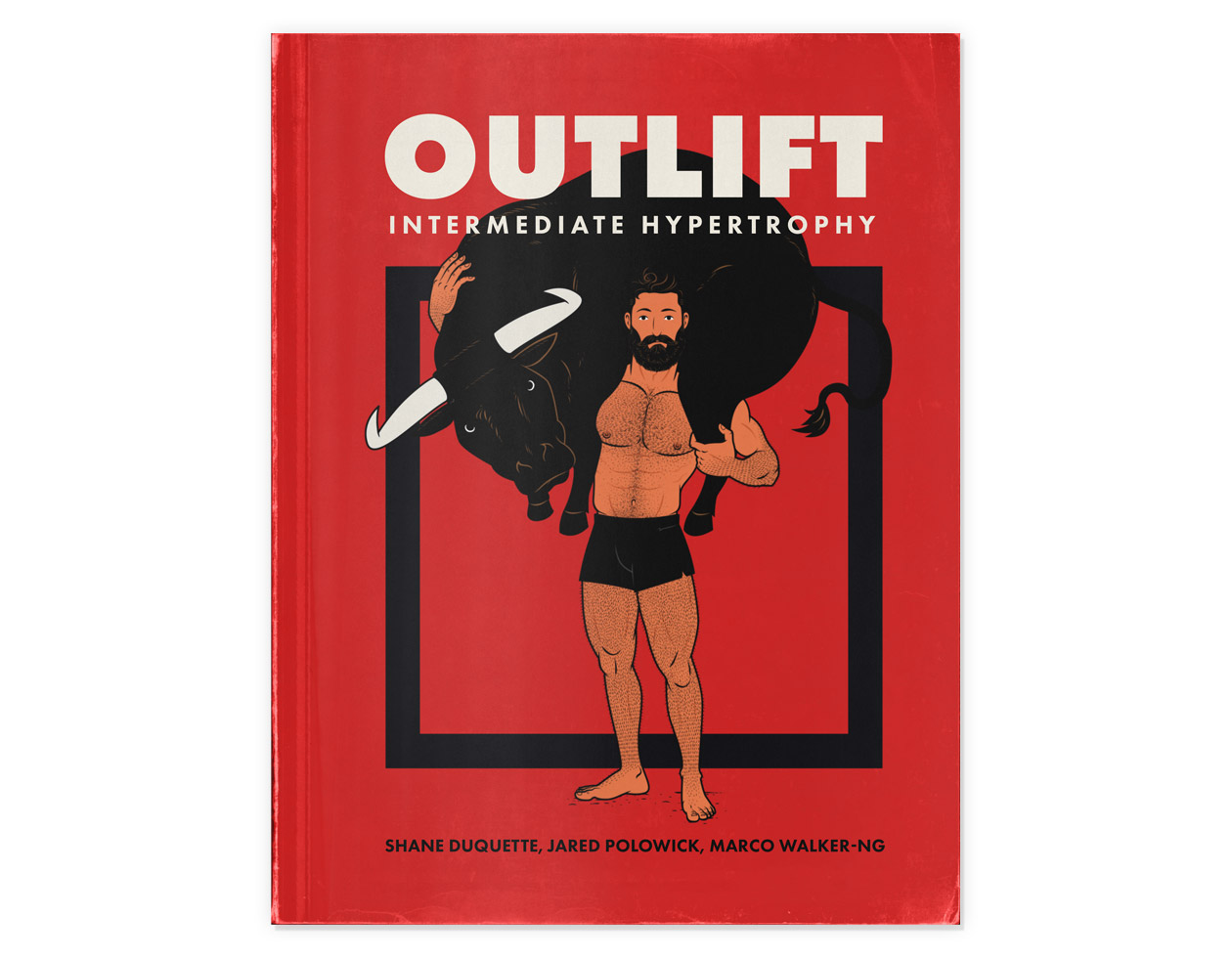
If you want a customizable workout program (and full guide) that builds these principles in, check out our Outlift Intermediate Bulking Program. Or, if you’re still skinny, try our Bony to Beastly (men’s) program or Bony to Bombshell (women’s) program. If you liked this article, I think you’d love our full programs.




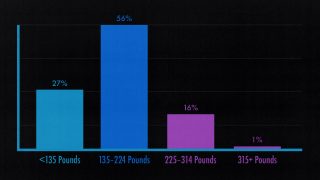
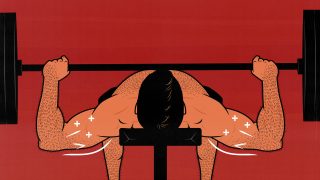
Hi Shane, can we conclude that we can replace inclined benching with close grip flat benching if goal is to focus on upper chest and front delts?
Secondly, reverse grip benching also activates upper pecs quite hard. Would like your views on it in comparison to a inclined bench and close grip flat bench. Thanx.
I don’t know if we can conclude that the close-grip bench press is better than the incline bench press for the upper chest and front delts, but we can certainly guess that it’s better. That’s my guess, anyway, at least for the front delts.
The upper chest is a bit more complicated. For all I know, the incline bench press does a better job of activating it, and that’s why it’s so famous as an upper-chest lift. I’d still bet on the close-grip bench press, but I’m not sure. I’m waiting for more evidence.
The reverse-grip bench is good for the upper chest for sure, and muscle growth in general. The downside is that it’s kind of finicky and dangerous compared to a classic grip. If someone wants to do it, more power to them—I know Greg Nuckols is a huge fan of them—but we don’t tend to recommend them. I’d hate to tell someone to do them and have them get hurt, you know? (We do list them as an assistance exercise in our bench press article, though.)
Hi Shane, yes I think different people benefit from different variations, some would like inclined and some would prefer close grip bench.
Totally 🙂
And still some of us prefer the close-grip incline press.
Definitely a great lift 🙂
My knowledge of the Reverse Grip Press is that it’s not conclusively better for upper chest activation. I would guess that it is, since the supinated grip would force your range of motion to emphasize shoulder flexion, but the only study I know that showed an increase in activation kept loads equal between exercise comparisons. As a result, it could be that activation was higher since the lifters were less familiar with the lift, and had to recruit more chest fibers to lift the same load. Either way, can’t hurt to try it out if you feel some upper chest activation, but I’d still try to keep the grip pretty narrow.
You should cite sources/evidence to validate your claims.
I’ve tried to explain my logic, cite research when possible, and keep my claims fairly modest. Is there something you feel is contentious that you’d like further evidence of?